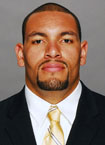Jan 29, 2015Practice Playbook for Injured Athletes
 By Jason Benguche, MS, CSCS, PES
By Jason Benguche, MS, CSCS, PES
Injuries are an unfortunate part of any sport. Regardless of how focused our training strategies are on injury prevention, sometimes they are simply unavoidable. This is a brief description of our strategy for training injured and limited athletes during their competition period.
Jason Benguche, MS, CSCS, PES, is Assistant Director of Player Development for Football at Georgia Tech.
As a strength and conditioning coach, time spent during team practice sessions is crucial for training athletes who are not participating in drills along with their teammates. On a typical day during both spring and fall practice, we are given a 45 to 60 minute window. Our recovering athletes have an individual plan based on their injury and length of recovery.
During in-season team practices, we are able to give these athletes additional time to work on the deficiencies that cannot be addressed during a typical workout. Here is our practice playbook for training various types of limited athletes during their rehab and recovery period.
Working with Sports Medicine
Athletic trainers and team doctors are the first line of action in the treatment and rehab of injured athletes. However, as their strength and conditioning coach, we are ultimately responsible for the long-term development of the athlete so we need to have a clear picture of each athlete’s daily status and situational needs.
With daily communication from our sports medicine staff, we are able to create a detailed list of injured athletes and their various statuses. Athletes training with our strength staff during practice are not participating in any sort of sport-related drills and are separated to train either outside or in the weightroom. From that point they are broken up into the following groups:
• Upper Body Limitation: Athletes with injuries to the upper back and neck, shoulder, and wrist, etc. are all put in this group. They are then put through a program with emphasis on lower body flexibility and mobility, hip prehab, unilateral lower body strength and other unconventional modes of lower-body training.
Progressions for these athletes will typically start with simple machine-based exercises that are not typically used with our normal program and progress to more complex bodyweight training if possible. These athletes will train their lower body twice a week in conjunction with limited training of the unaffected side of their body and the traditional rehab work they do the other days of the week.
• Lower Body Limitation: Individuals with injuries to the lower back, hip, knee and lower leg are placed in this group. Their program has an emphasis on upper body flexibility and mobility, shoulder prehab, unilateral upper body strength and other traditional modes of upper body training.
Progressions for these athletes will start with a combination of seated barbell and machine pushing/pulling exercises. If possible, we’ll progress to more complex dumbbell movements. Many of these athletes will train their upper body twice a week in conjunction with limited training of the unaffected side of their body, with traditional rehab sessions the other days of the week.
• Conditioning and Torso/Core Work: A coach I previously worked for once said, “Even a man with no arms and legs can train his neck and core.” Although we are not faced with such an extreme degree of limitation, I follow this philosophy and ensure that all limited athletes will have aspects of torso/core training in their program on a daily basis. A wide variety of stability, flexion, extension and rotation movements are included based on the athlete’s capability.
In regards to conditioning, we have options for almost every given situation. These include; Airdyne upper/lower biking, battling ropes, tire pushes, seated boxing, med ball work, and various field movements which all challenge the athlete without aggravation to the injured area. Maintaining some conditioning base is important for these athletes during times of decreased metabolic output. They are also counseled on their nutritional intake to ensure the correct caloric balance is maintained during this period to reduce possibilities of weight gain.
The Mental Process
Coaching athletes who are dealing with injuries is a bit different than coaching our non-injured athletes who are participating in the in-season program. For example, our injured athletes often have a very negative outlook on their situations and do not see any bright spots about missing practice and playing time.
It is our role to contribute to their support system by creating a positive atmosphere that reminds them on a daily basis that every cloud has a silver lining. It helps to emphasize that each rehab and recovery phase provides them an extended period of time to work on weaknesses and deficiencies. Thus, they should approach this work with the focus and drive that they would normally devote to the practice field.
Worth the Effort
Planning and implementing in-season training for the majority of healthy athletes on your roster can be difficult. But it is even more complex when you figure in a physical limitation and missed practice and playing time.
With a proper a support system and effective communication between the sports medicine team and your staff, you can develop a plan that greatly aids an athlete’s development during what is typically a rough period of time. And after a full recovery, this work will help make an athlete not only physically stronger, but mentally as well.
Jason Benguche, MS, CSCS, PES, is Assistant Director of Player Development for Football at Georgia Tech.
FEEDBACK:
Well composed and written! Coach Benguche exemplifies what modern strength and conditioning should be about…minimizing risk, maximizing potential and making athletes aware that their success is not just based on the score or podium position, but on their maturation as a person and athlete as well. Get better daily! – James Paul



